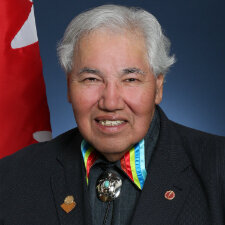About three years ago, Commissioner - the Honourable Justice Murray Sinclair, former senator and co-author of the 2015 Truth and Reconciliation Report spoke to a packed crowd of us at King’s College Conference Centre in London, Ontario.
After a brief introduction to the talk on reconciliation, he invited all of us to take out our cell phones. I thought initially he was going to ask us to put them on mute. Not so. He asked us to scroll through and find a favorite picture of our child or niece, nephew, or grandchild. He did the same and landed on a picture of his 5-year-old granddaughter. It made him smile. There was a pause in the audience. “Now, he said, I want you to delete the picture.” As you can imagine, no one deleted anything. In a very poignant and stark way, we all got the point. This was the experience of so many indigenous parents whose children “were disappeared” in a variety of ways to the residential school system. Deleted.
None of us knew in that conference hall over three years ago that we would be reading in the newspaper in Canada on May 27, 2021, that 215 bodies of indigenous children were found buried in the yard of a residential school in Kamloops, British Columbia. Some were as young as three years old. Deleted.
In a conversation with friends the day after the revelation, one of the details that left us saddened and almost without words was the photo of a pair of small handcuffs created specifically for a child’s hands. While it was unspoken, the thought of intentionally handcuffing a small child somehow seemed to capture the cruelty and racism of this part of the Canadian story---past and present. Deleted.
During this year-and-a-half of the global pandemic; during this year-and-a-half of continued unmasking of systemic racism in the US and in Canada; during this year-and-a-half of ongoing angst about climate change, there is one question that rises to the surface.
As we carry grief and shock, what is the new story we will commit to creating personally and communally as a country?
Sister Margo Ritchie, Congregational Leader, csj







